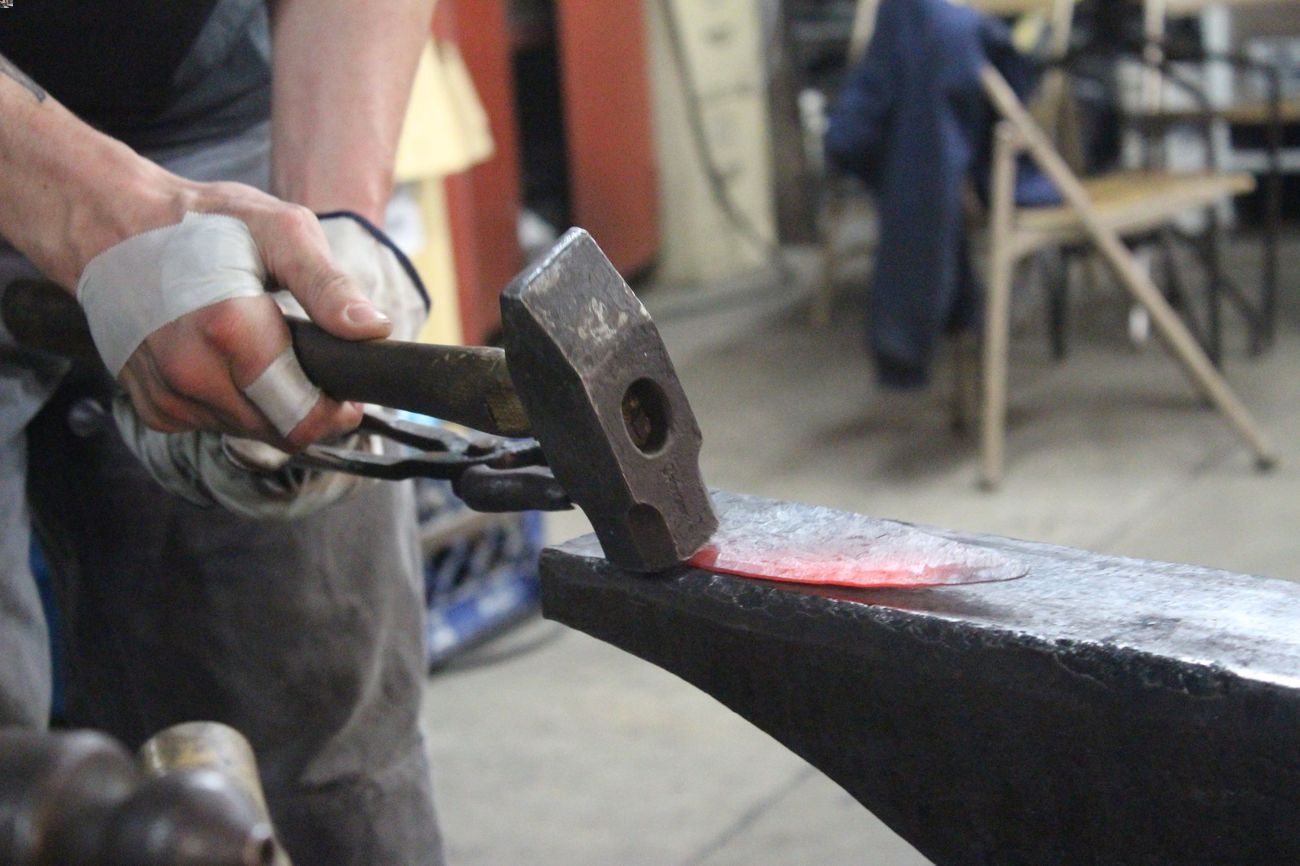
Bladesmithing is an ancient craft that combines art, science, and skill to create beautiful, functional blades. But what exactly goes into this fascinating process? Bladesmiths use various techniques to forge, shape, and sharpen metal into knives, swords, and other cutting tools. From selecting the right type of steel to mastering the heat treatment process, every step is crucial. Did you know that some bladesmiths even incorporate traditional methods passed down through generations? Whether you're a history buff, a DIY enthusiast, or just curious, these 34 facts about bladesmithing will give you a deeper appreciation for this timeless craft.
What is Bladesmithing?
Bladesmithing is the ancient craft of making knives, swords, and other blades. It combines art, science, and skill to create functional and beautiful tools. Here are some fascinating facts about this timeless craft.
-
Bladesmithing dates back over 4,000 years, with the earliest known examples found in ancient Egypt and Mesopotamia.
-
The term "bladesmith" comes from the Old English word "smið," meaning "smith" or "craftsman."
-
Traditional bladesmiths use a forge, anvil, and hammer to shape metal into blades.
-
The process of heating and hammering metal to shape it is called forging.
-
Bladesmiths often use high-carbon steel, which is known for its hardness and ability to hold a sharp edge.
The Art of Forging
Forging is a critical part of bladesmithing. It involves heating metal until it's malleable and then hammering it into shape. This process requires precision and skill.
-
Forging temperatures can reach up to 2,000 degrees Fahrenheit.
-
Bladesmiths use different hammering techniques to shape and refine the blade.
-
The anvil is a crucial tool in forging, providing a solid surface for hammering.
-
Bladesmiths often use tongs to hold the hot metal while they work.
-
Quenching is the process of rapidly cooling the hot metal in water or oil to harden it.
Types of Blades
Blades come in various shapes and sizes, each designed for specific purposes. Here are some common types of blades made by bladesmiths.
-
The chef's knife is a versatile kitchen tool used for chopping, slicing, and dicing.
-
The Bowie knife, named after American frontiersman Jim Bowie, is known for its large, curved blade.
-
The katana is a traditional Japanese sword with a curved, single-edged blade.
-
The dagger is a double-edged blade used for stabbing.
-
The machete is a large, broad blade used for cutting through thick vegetation.
Techniques and Skills
Bladesmithing requires a variety of techniques and skills. Each step in the process is crucial to creating a high-quality blade.
-
Heat treating involves heating the blade to a specific temperature and then cooling it to improve its hardness and durability.
-
Tempering is a heat treatment process that reduces brittleness and increases toughness.
-
Grinding is used to shape the blade and create a sharp edge.
-
Polishing gives the blade a smooth, shiny finish.
-
Etching involves using acid to create patterns or designs on the blade's surface.
Famous Bladesmiths
Throughout history, many bladesmiths have gained fame for their exceptional craftsmanship. Here are a few notable names.
-
Masamune, a legendary Japanese swordsmith, is known for creating some of the finest katanas.
-
Bob Kramer is a modern American bladesmith renowned for his high-quality kitchen knives.
-
Tony Swatton is a Hollywood bladesmith who has created weapons for movies and TV shows.
-
Bill Moran is credited with reviving the ancient art of Damascus steel in the 20th century.
-
Don Fogg is known for his innovative techniques and contributions to the bladesmithing community.
The Science Behind Bladesmithing
Bladesmithing isn't just about artistry; it also involves a deep understanding of metallurgy and material science.
-
High-carbon steel contains more carbon than other types of steel, making it harder and more durable.
-
Damascus steel is made by folding and forging multiple layers of steel, creating a distinctive pattern.
-
The Rockwell scale measures the hardness of a blade, with higher numbers indicating harder steel.
-
Alloying elements like chromium, vanadium, and molybdenum can enhance a blade's properties.
-
Cryogenic treatment involves cooling the blade to extremely low temperatures to improve its performance.
Modern Bladesmithing
While traditional techniques are still used, modern bladesmithing has also embraced new technologies and materials.
-
CNC machines can precisely cut and shape blades, reducing the time and effort required.
-
Powder metallurgy allows for the creation of high-performance steel with uniform properties.
-
Composite materials, like carbon fiber and G10, are used for lightweight and durable knife handles.
-
Laser engraving can add intricate designs and logos to blades with precision.
The Final Cut
Bladesmithing isn't just about forging metal; it's a blend of art, history, and science. From ancient techniques to modern innovations, this craft has evolved while maintaining its core principles. Whether you're fascinated by the metallurgy, the craftsmanship, or the cultural significance, there's always something new to learn. Remember, every blade tells a story, from the materials used to the techniques applied. If you're thinking of diving into this world, start small, practice often, and respect the traditions. Bladesmithing offers a unique way to connect with history and create something truly unique. So, grab your hammer, fire up the forge, and let your creativity flow. Happy forging!
Was this page helpful?
Our commitment to delivering trustworthy and engaging content is at the heart of what we do. Each fact on our site is contributed by real users like you, bringing a wealth of diverse insights and information. To ensure the highest standards of accuracy and reliability, our dedicated editors meticulously review each submission. This process guarantees that the facts we share are not only fascinating but also credible. Trust in our commitment to quality and authenticity as you explore and learn with us.
